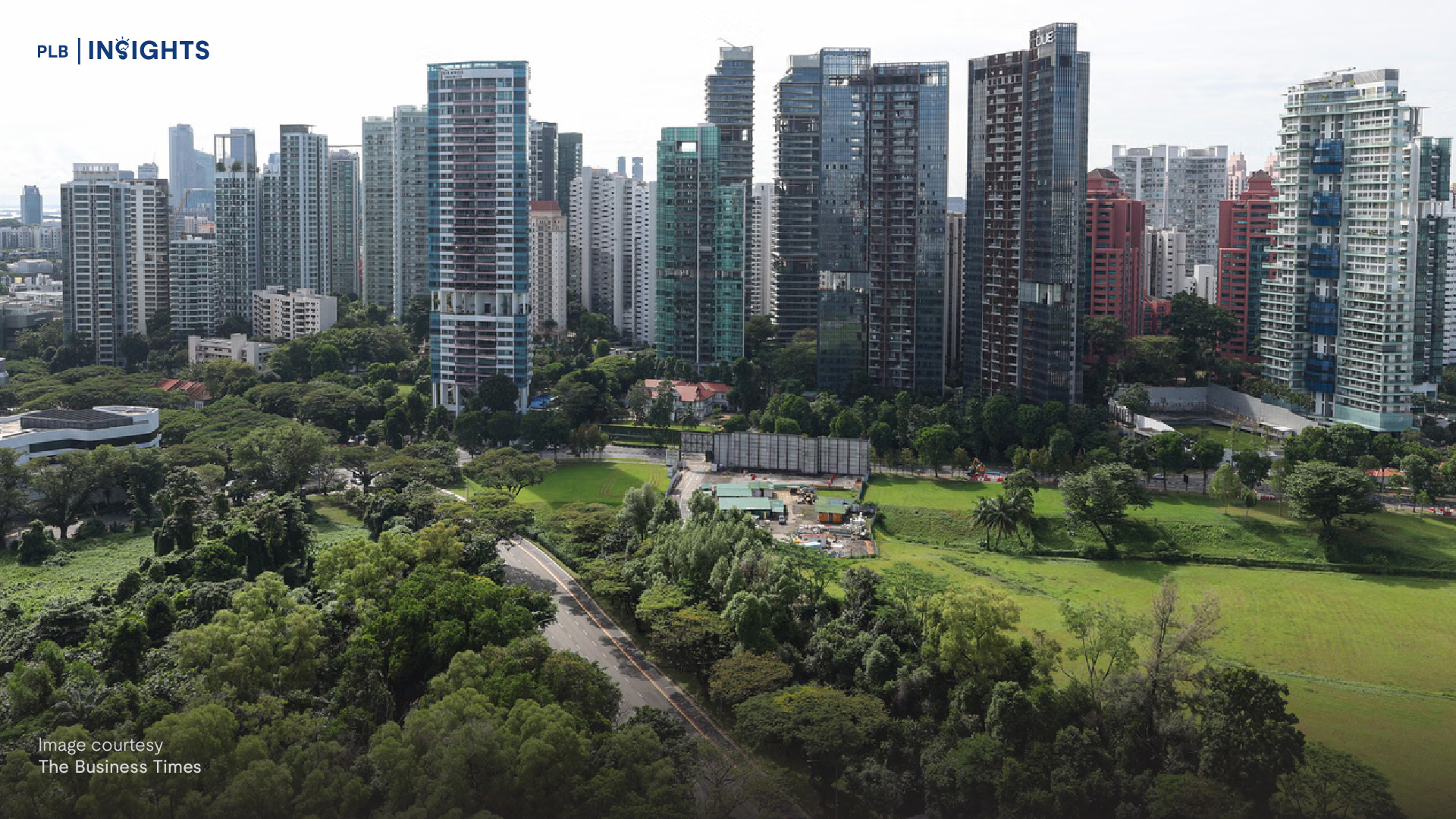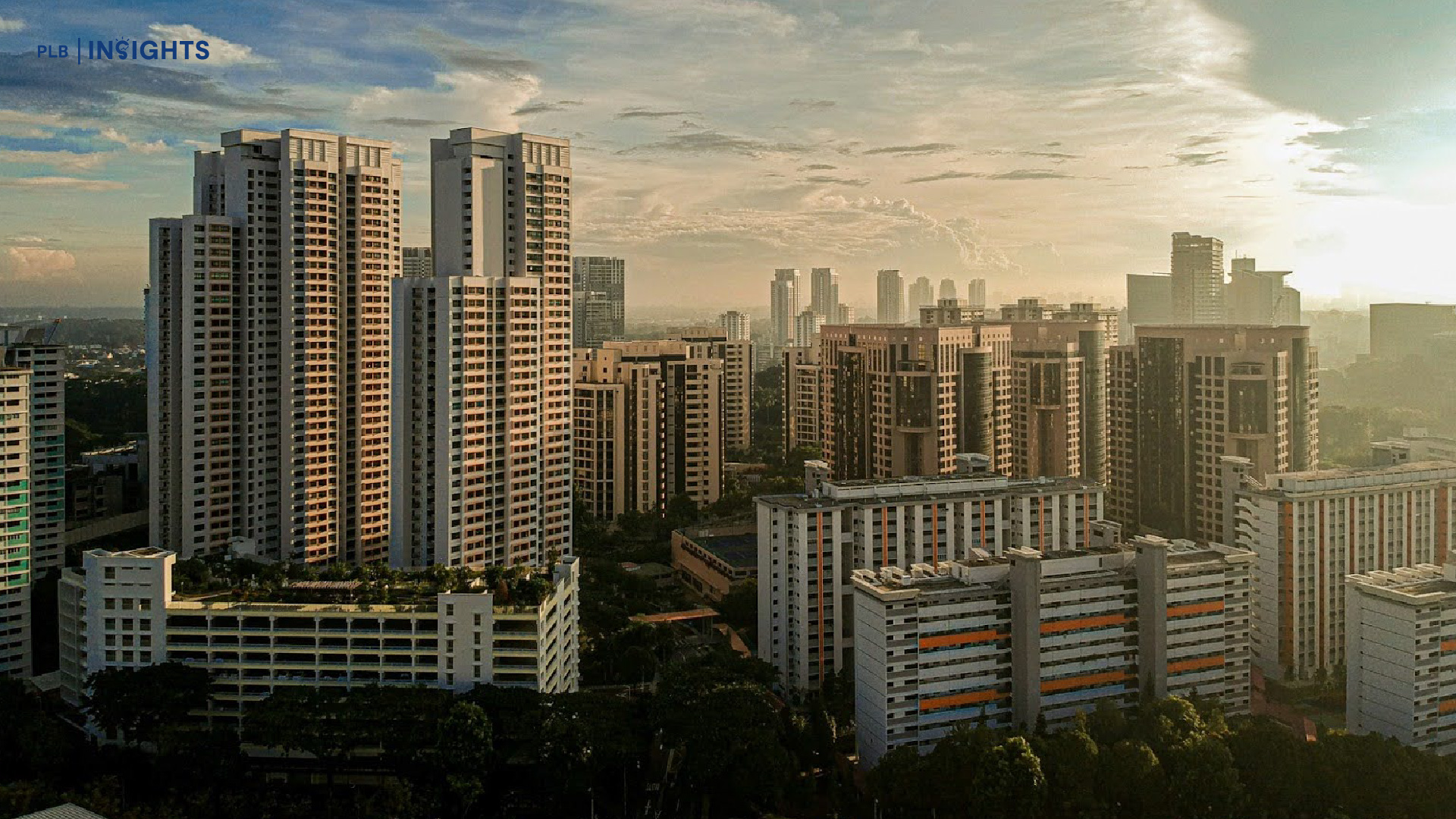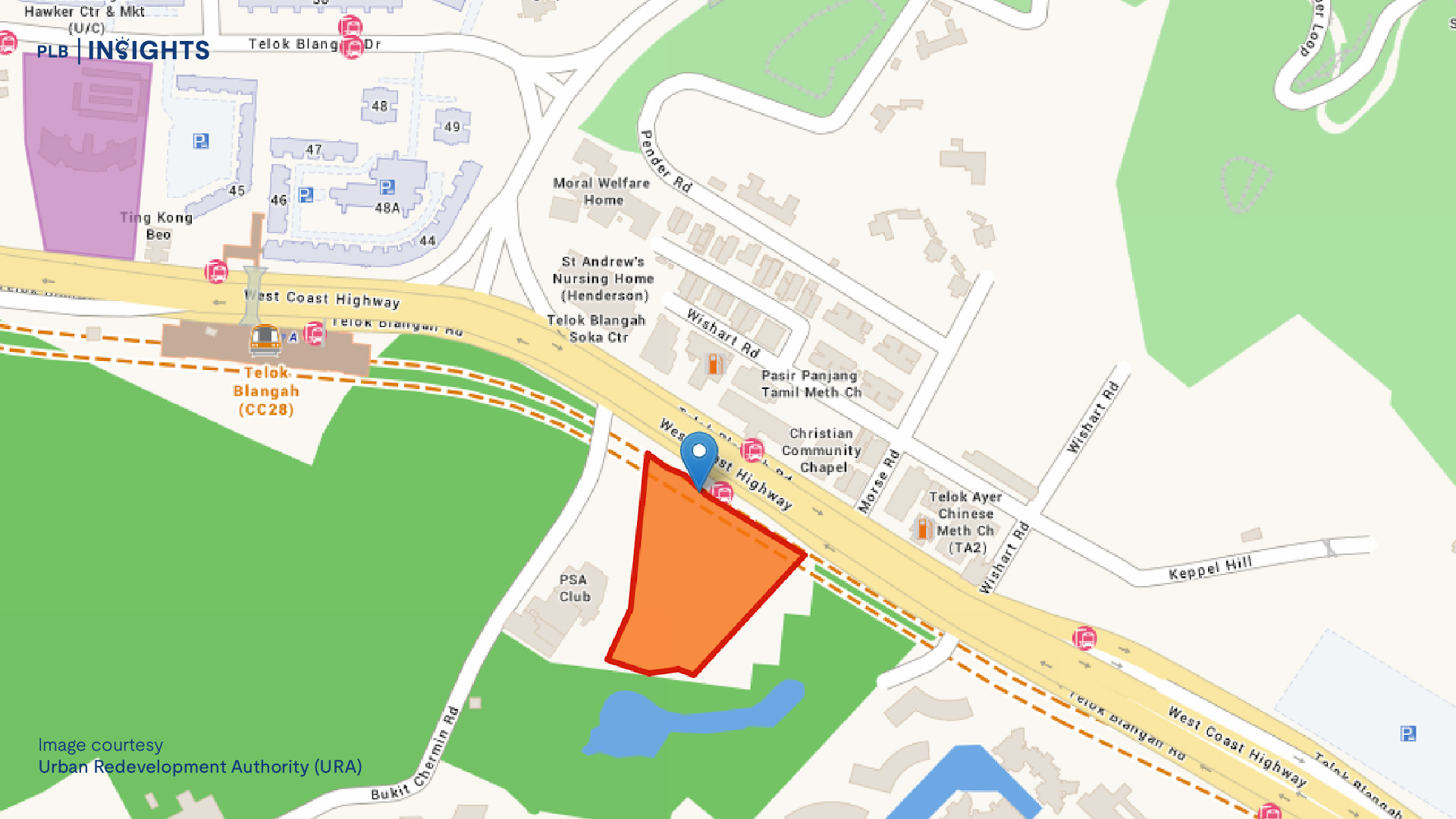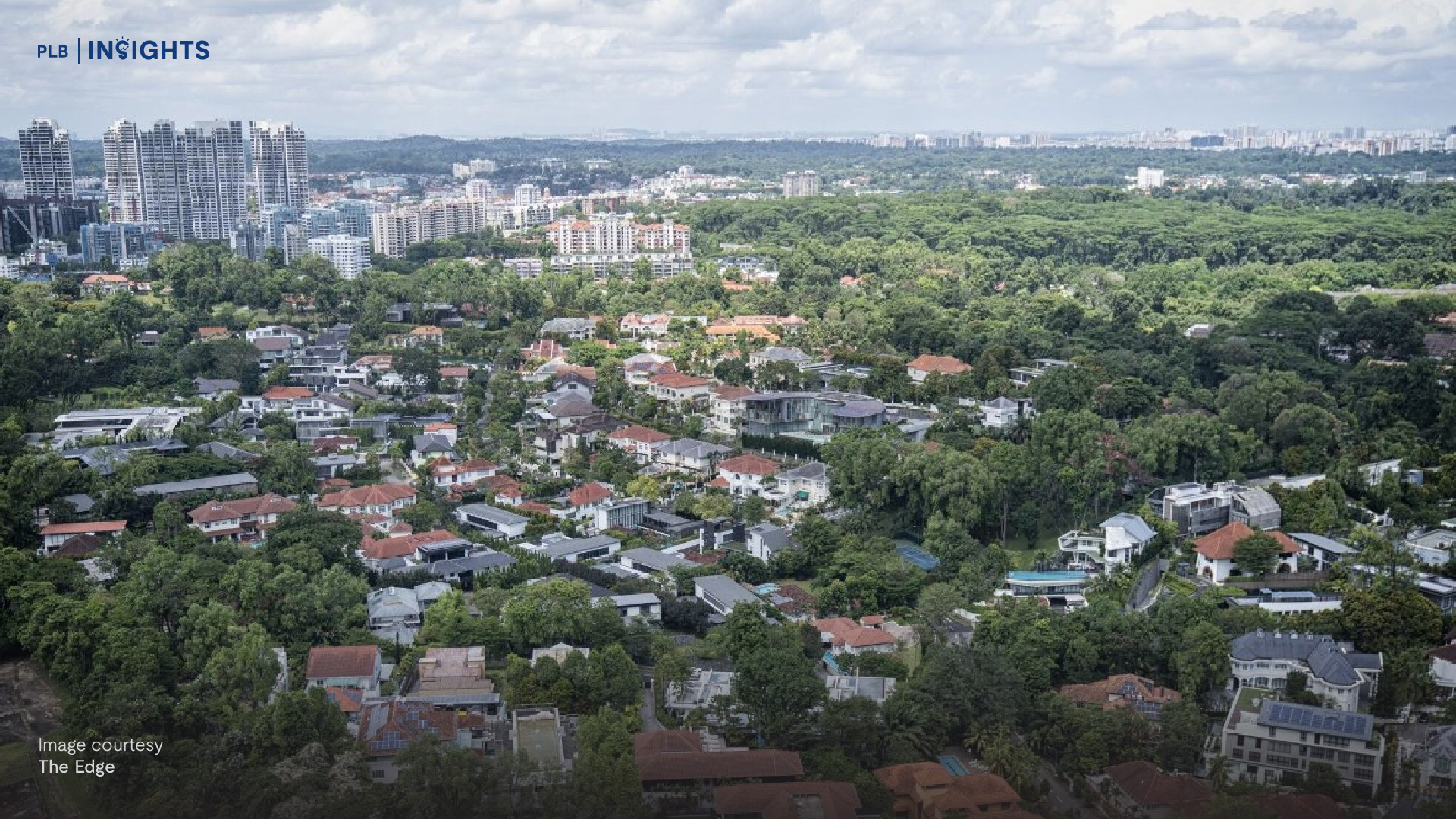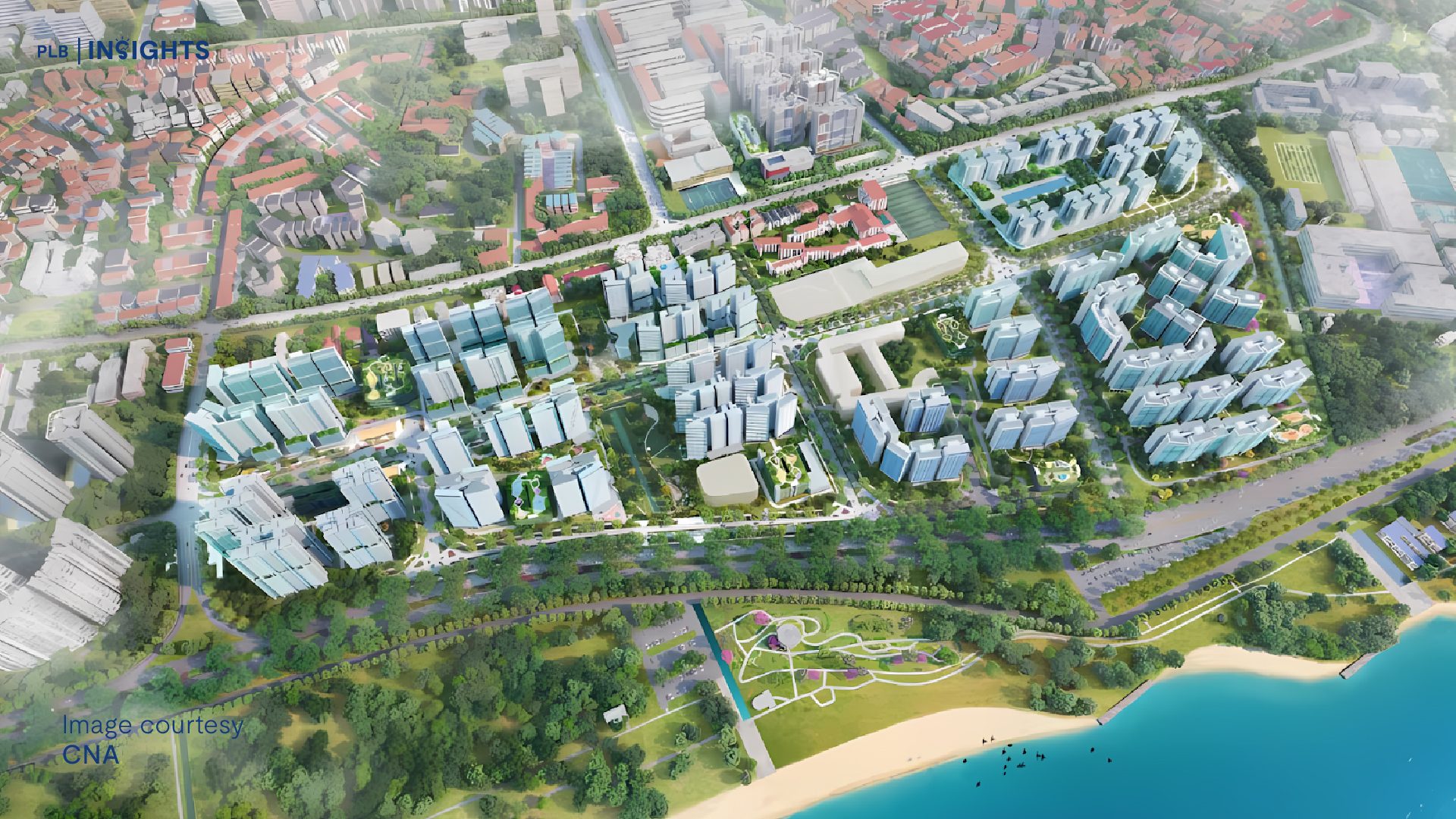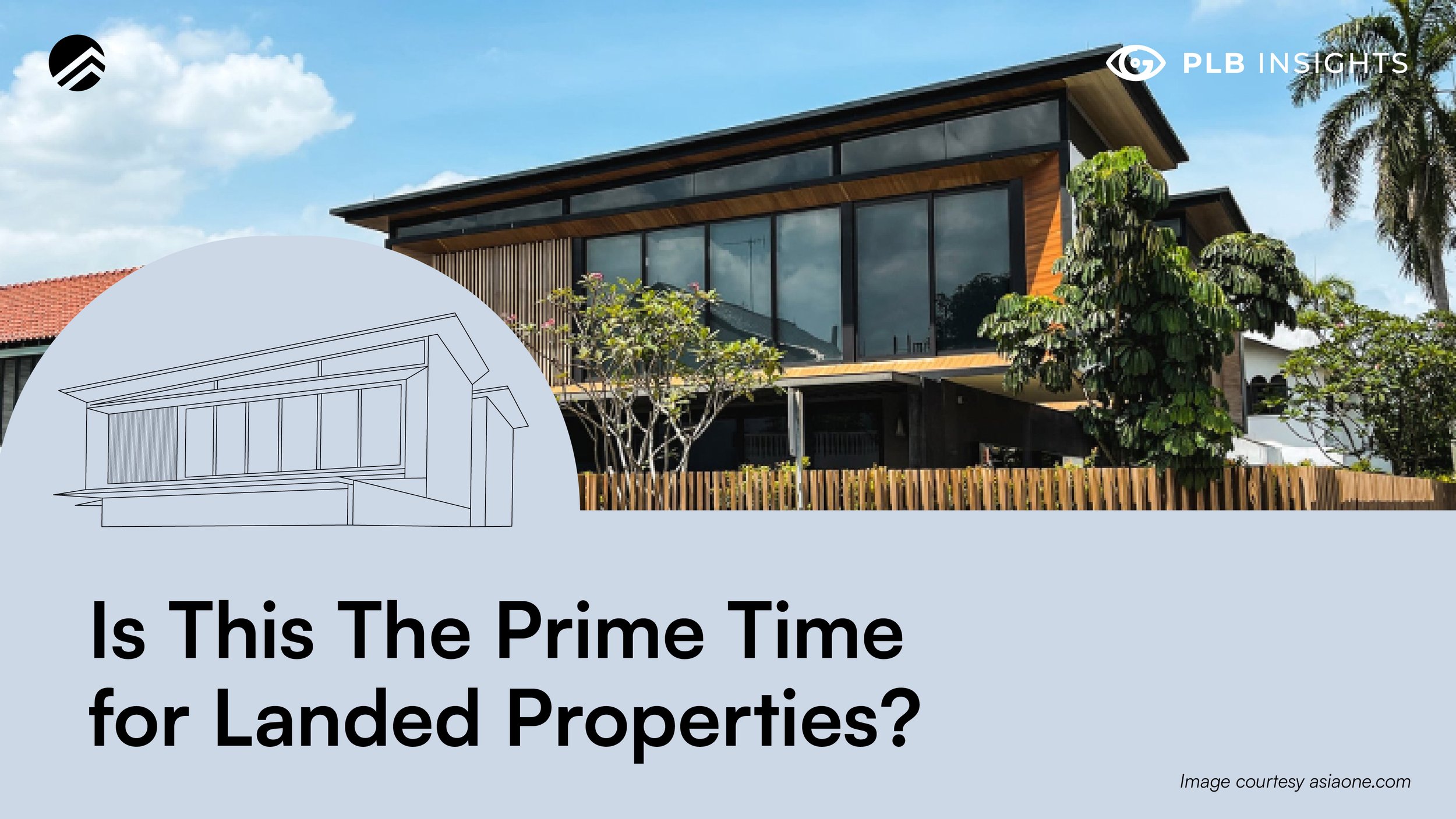
Back in early 2021, we predicted that the landed market would come into focus in the real estate market. Fast-forward a year later, and we can observe that prices have indeed risen spectacularly. Owing to the low-interest rate environment and a sudden surge in demand for bigger homes, 2021 saw a new high in property prices propelling the Singapore real estate market into the spotlight in our national discussions and news channels.
In this article, we focus on the landed property market, a property class that we think will become a key segment in the market in the coming years. Examining the key market trends for semi-detached landed properties, we posit that the trends we see for this type of landed property are likely to continue for at least the next half of the year.
Understanding the types of landed properties
Landed properties can be categorised into 4 main types by age and condition. Each of these categories have their own pros and cons, and are best suited for different types of buyers, depending on their buying strategies and individual priorities.
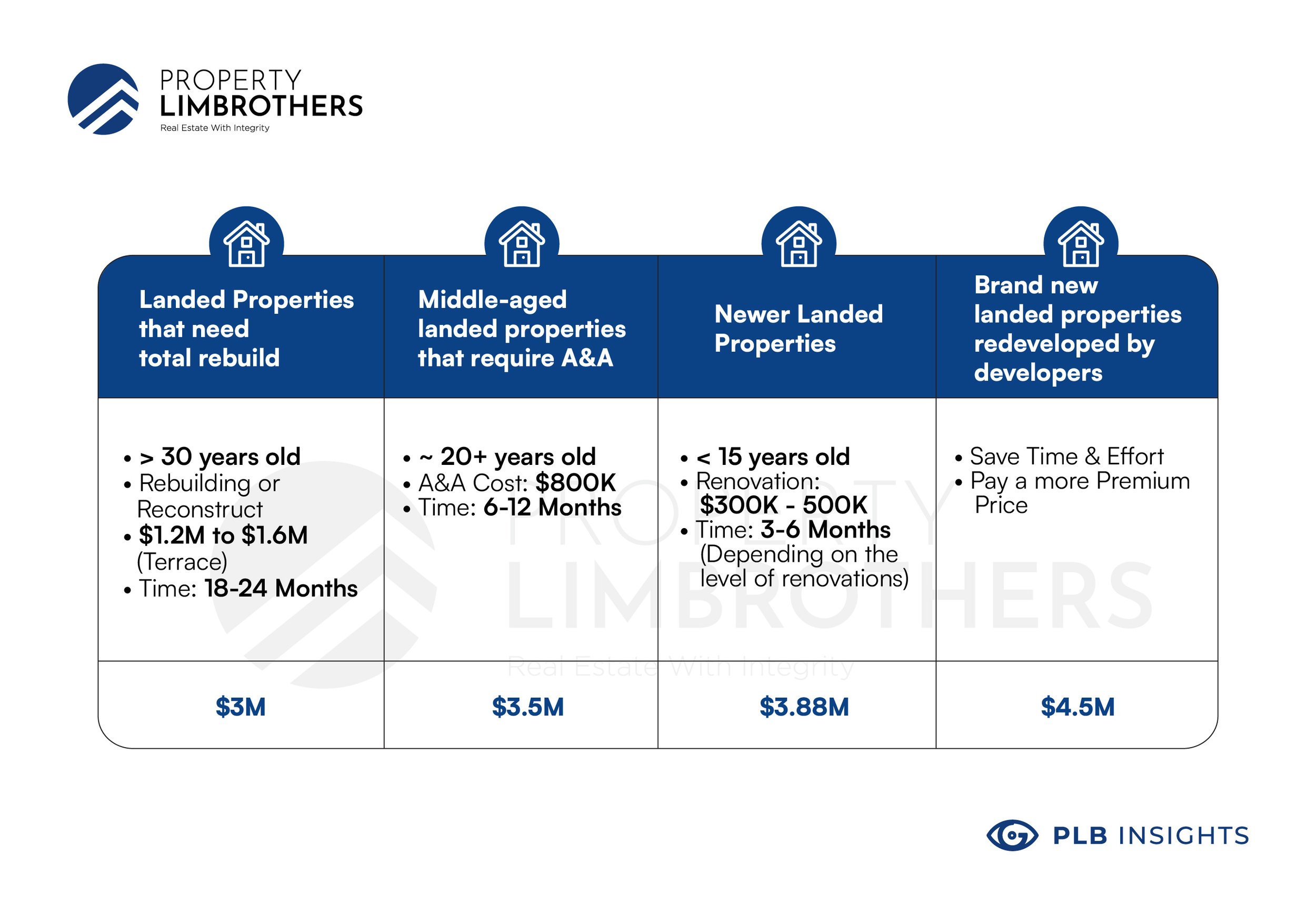
-
Landed properties that need total rebuild: These are the properties that are very old and likely single storey. They require immediate and extensive renovation including full teardowns and rebuilds the moment they are purchased. These properties are more suited for buyers who are particular about interior design, and want to design the architecture of the home according to their own preferences.
-
Middle-aged landed properties: These properties are in the 20-30 year old range. They likely require major renovation in the form of Addition and Alteration (A&A) which are estimated to cost around $400,000-600,000.
-
Newer landed properties that are in move-in condition: These are modern, and large properties that are less than 10 years old. They do not require renovations and typically have good upkeep. An example of this are the landed homes that can be found along Tembeling Road and Carpmael Road. Such properties are desirable for families looking to move in quickly and generally only require a quick layer of paint and cleaning.
-
Brand new landed properties from developers: These properties are completely new and bought from developers who rebuild new units over landed plots. The prices for these are at minimum in the $4.3M to $4.5M range.
Of course, many factors come into play when considering which type of landed property to purchase. For example, someone with time on their hands and who is particularly architecturally sensitive may choose to purchase an older landed home to rebuild the house into their dream home. However, someone who is in urgent need of a home and does not mind finding this home in the marketplace may opt for the newer landed properties. Additionally, investors who want to buy into the home in hopes of capital appreciation will also be looking to enter the market as soon as possible. In contrast, buyers who perhaps value the exclusive features that many developer homes now offer, may choose to buy into new landed properties instead.
Pressure from below: rising inter-terrace prices
To understand the market situation for semi-detached properties, let us take a look at the properties that sit one tier lower: inter-terraces.
Pure landed entry-level properties like inter-terraces in the range of $2.5-3M were especially popular, seeing high demand all the way into mid-2021.
As of mid-2021, it was almost impossible to find these properties for sale below the $3M mark. Only when buyers look towards less popular districts further out in the OCR zone that prices below $3M are available. Based on the data available, we see that most homeowners are asking for generally $2.9M at minimum for an inter-terrace. The price appreciation occurring at this lower tier is important as it drives the price movements for all the tiers above it which includes semi-detached homes.
Here, we can see the disparity effect come into play to push prices up in the semi-detached market.
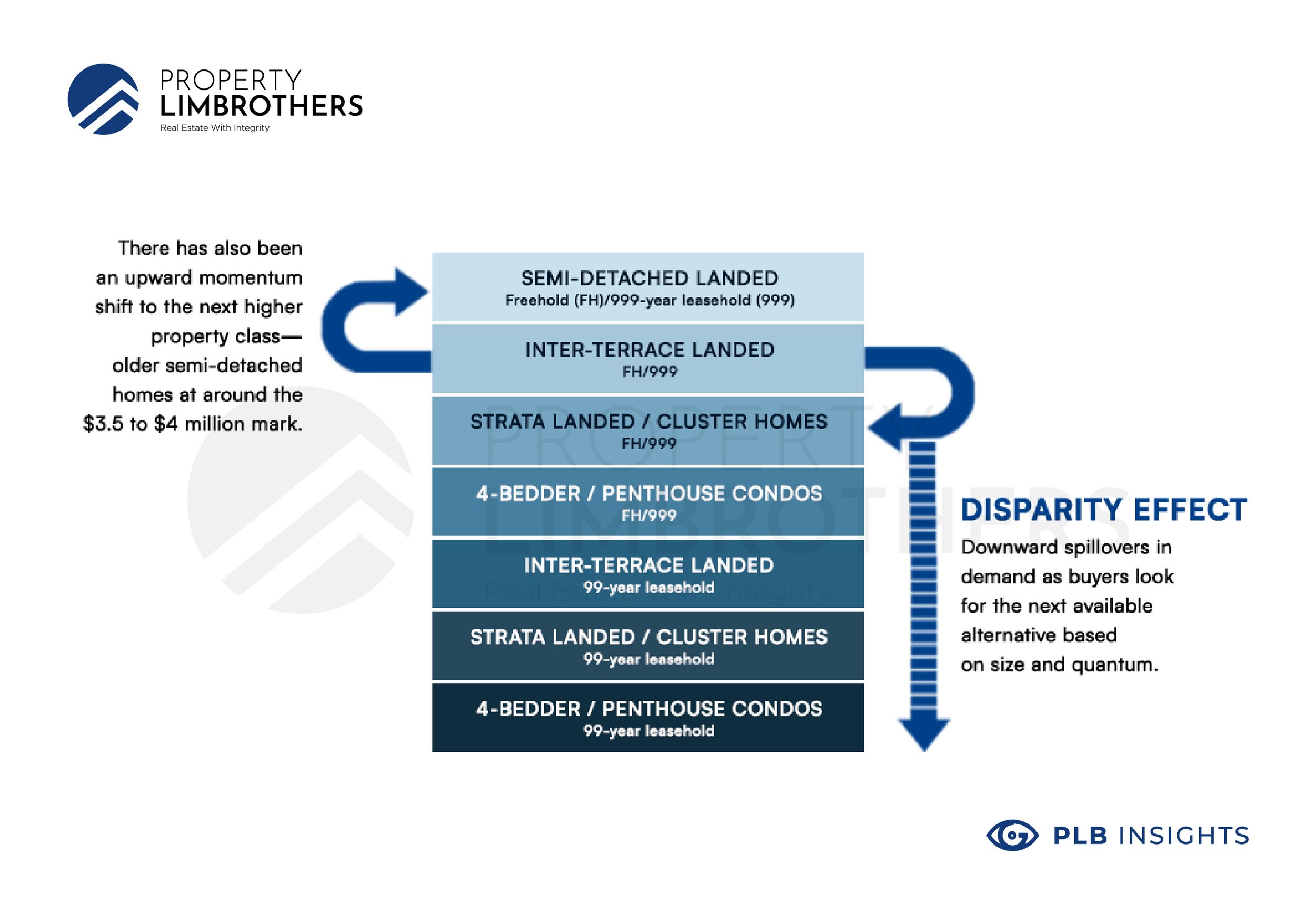
In another episode, we explained that the disparity effect is in play to push property prices up. Families that were initially looking for 4-5 bedroom condominiums now look towards the next available range of properties which are the strata cluster houses which fall in the $2M range, forcing prices for strata cluster homes up. This was in the context of condominiums and strata cluster homes; however, the same concept can apply to all property classes – when the demand and hence prices for one level of properties appreciate, it will push the prices of the next tier homes upwards.
Since inter-terraces are already reaching the upper range of their pricing, the disparity effect is likely to push buyers towards the next higher tier of semi-detached properties. And while inter-terraces will remain as a favourite among the types of landed properties because of its entry-level status at $3M, we predict that semi-detached properties in the $4-5M range will be the next big focus over the next 6-9 months.
Rising building costs push prices even higher
Even though the disparity effect already explains a large amount of the price movement in the market. The effect is made more apparent by increased costs in construction of landed properties for both manpower and material costs. When buying a landed property, we tend to forget that the land value is not the only aspect of a landed property’s price. The value of a property also factors in the value of the structure sitting on top of it. This value includes the cost of building materials like wood, marble, concrete, and time spent by architects and builders. Due to supply chain issues made worse by Covid, every component of a landed property has increased in price. Thus, not only does land price increase due to price appreciation, additional value of the landed structure also has shot up in recent years.
Limited supply benefits existing Category 4 properties
It is unlikely that these supply chain issues will be resolved in the short-term. With limited capacity for homeowners and developers to renovate new homes, there will be a limited supply of Category 3 and 4 properties available. This also means that those buying Category 1 and 2 properties will face higher costs and delays when rebuilding their properties, discouraging buyers from purchasing them in the first place.
To reiterate the amount of time it takes to get a new landed unit up on the market: construction of a landed property takes a total of about 24 months from start to finish. This includes 3 – 6 months designing with an architect, another 3 – 6 months waiting for BCA approval, and 12 – 16 months for the actual construction.
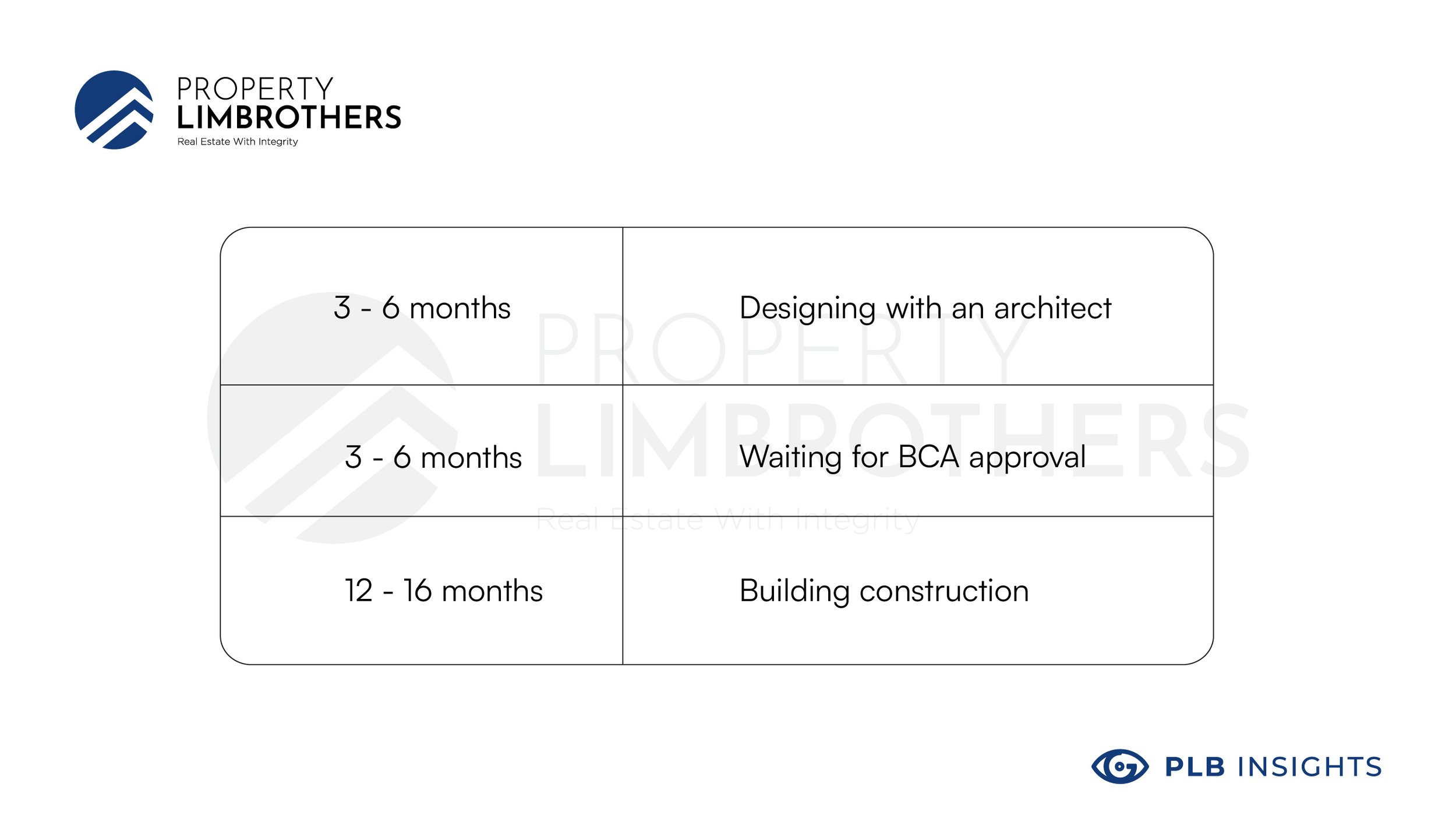
All of these combined means that we can expect brand new Category 4 properties to remain in short supply, thus sharply appreciating in price amidst increased demand.
Our prediction is based on data: semi-detached properties have yet to peak.
We have research to support our opinion that semi-detached properties will become popular due to upward pressure from highly demanded inter-terraces. The quarterly price trends show that semi-detached price quantums have not moved very much relative to other types of properties.
An upward price trend
In our studies, we observed that D19 semi-detached properties have remained steady around the $3M range up until 2018 where it hit $4M and since then have continued to fluctuate between the $3-4M mark. Finally, it has stabilised at $4M in Q2 of 2021.
On the other hand, D19 inter-terraces have steadily risen from $2.5M up to $3M in the past 5 years and do not appear to be slowing down. In fact, prices rose the fastest over the past year in the opportunistic environment created by Covid.
Putting the two trends together, the price trends indicate that semi-detached prices are lagging behind inter-terraces and may follow the upward trend of inter-terraces soon.
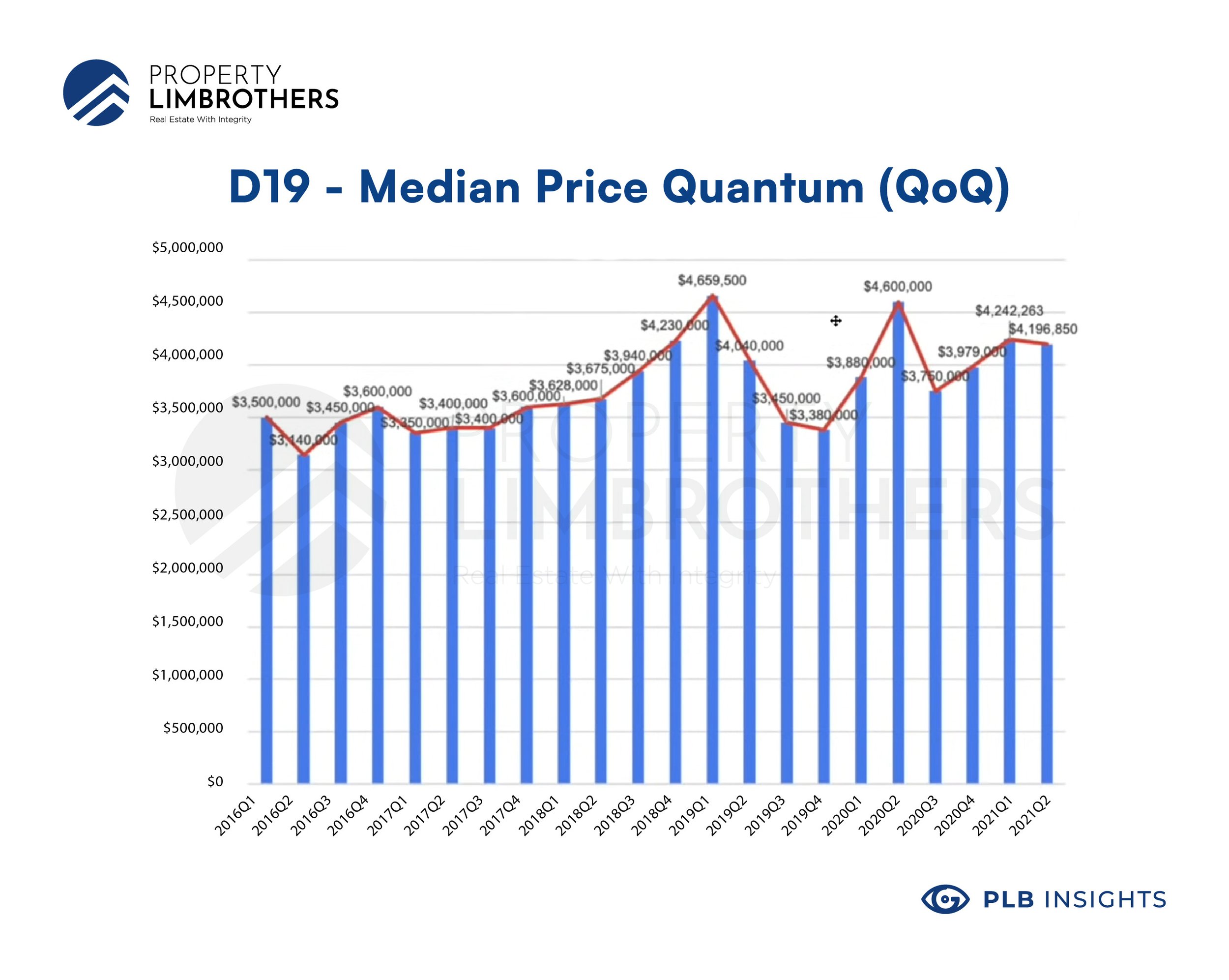
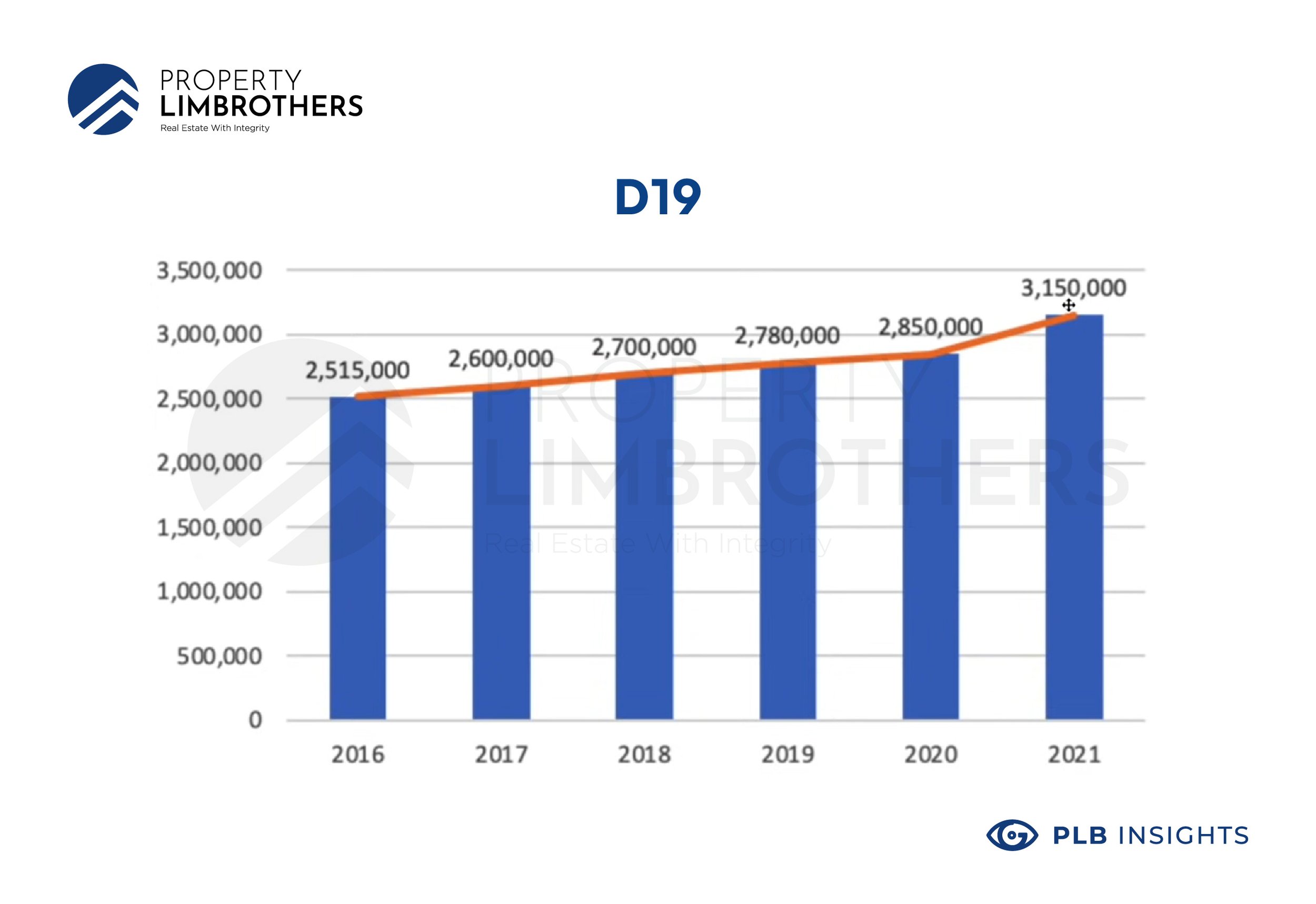
High transaction volume
However, price only tells one side of the story. The price movements are accompanied by trends of high transaction volume which indicate a strong momentum behind the movement. It is a sign that people are buying into the trend and hence reinforce the price movement.
Looking at the volume of transactions at an aggregate across all districts, we see that the volume has been rising over the past year. Specifically, landed property stands out for its consistently high volume, ever since 2011. More importantly, it has surpassed its last peak, indicating a trend with strong momentum supporting it.
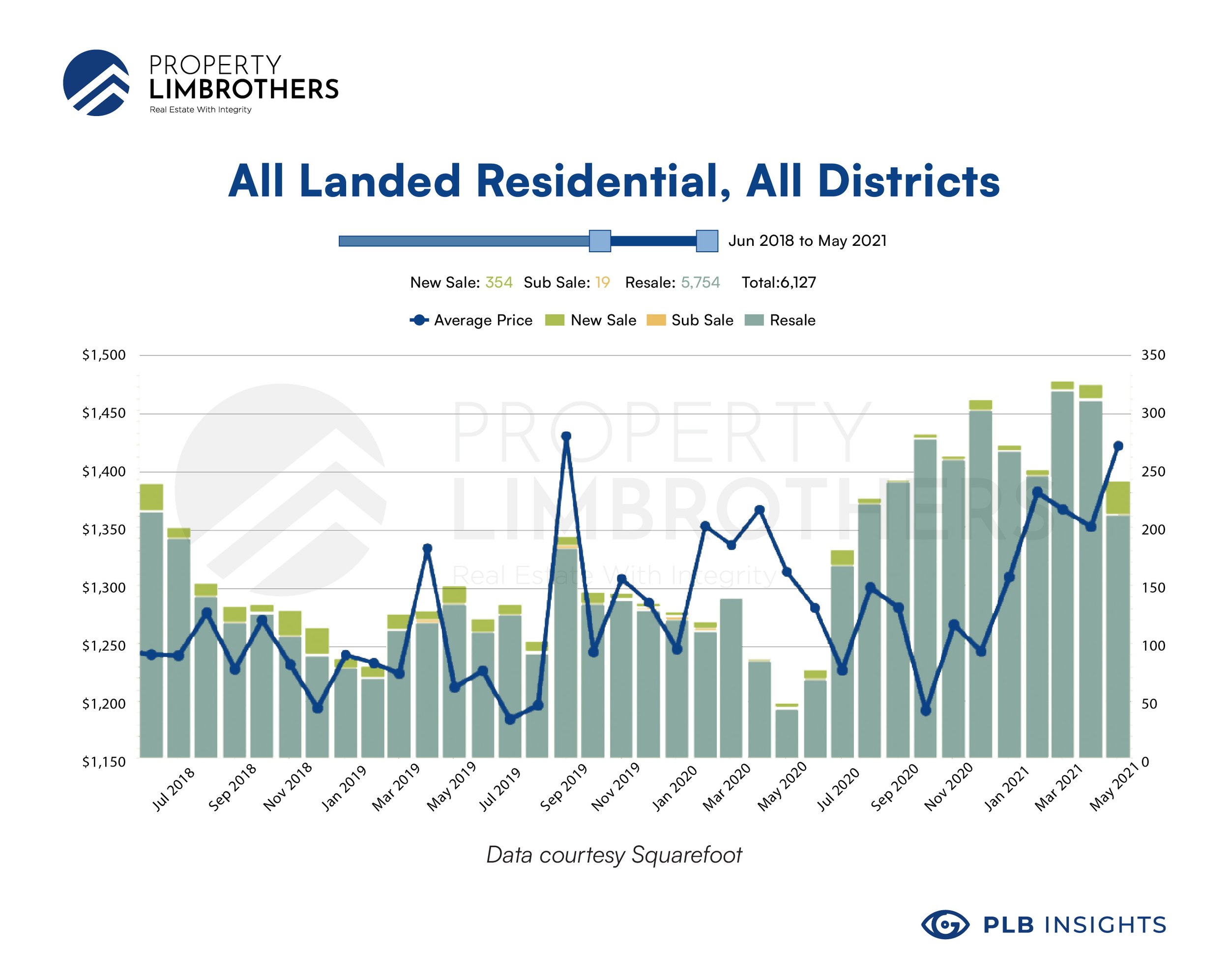
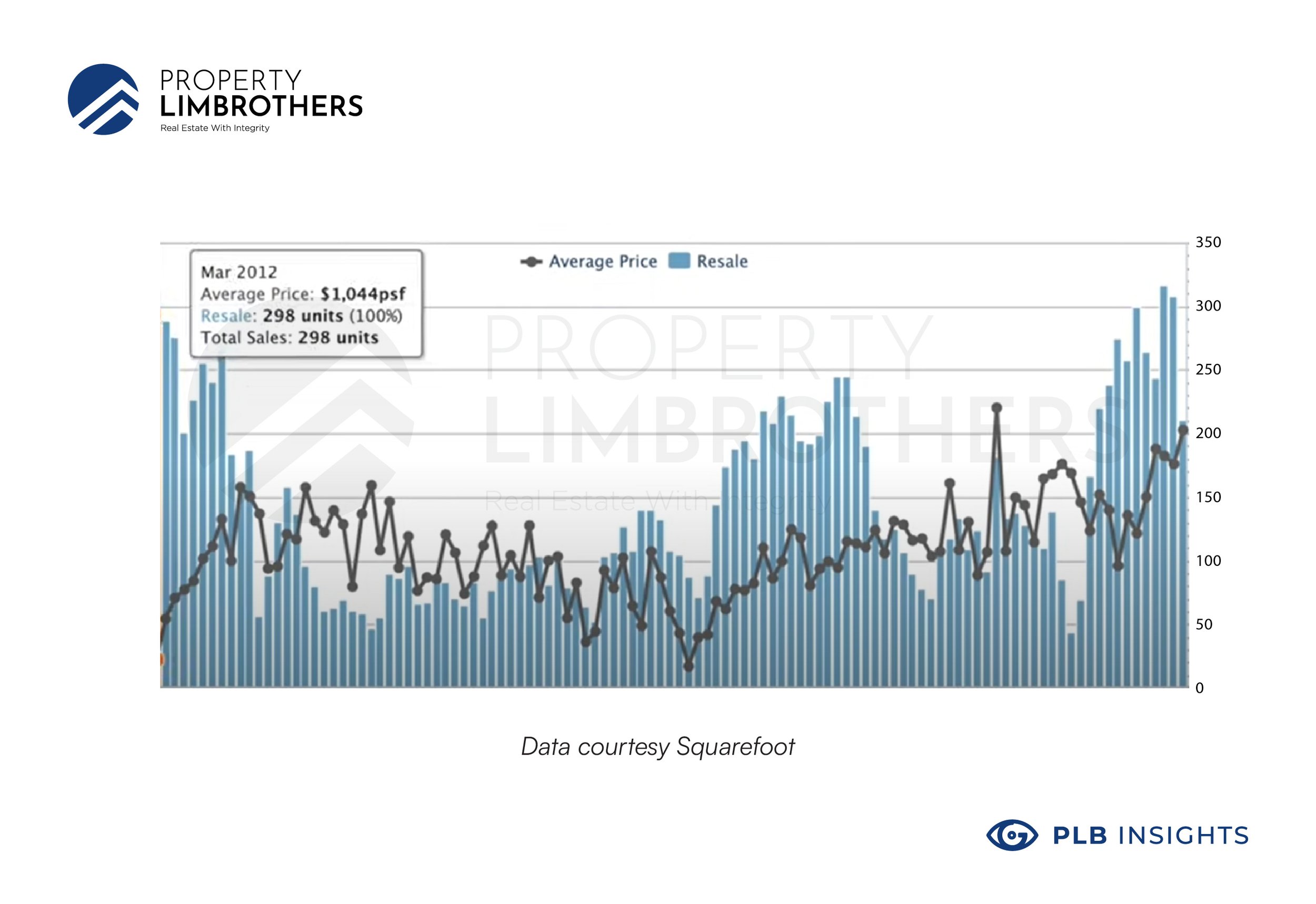
How do new launch condos compare?
The unique aspects of pure landed properties explain why the landed market has gained so much momentum recently.
Somewhat counterintuitively, landed property tends to have a lower PSF than new launch apartments because the built-up area over multiple floors is larger than condo units for the same price. When new-launch condominium PSF inches upwards as we have seen in the past year, people tend to look for larger spaces where landed property easily provides an attractive price.
Of course the comparison between landed properties and condos goes much further beyond PSF value alone. Considerations such as facilities, maintenance, and convenience all contribute to the value perceived by the buying audience. The former is purely landed with no facilities, while the latter has facilities and maintenance built in which may appeal to certain families. Other buyers might also consider privacy and find the appeal of landed homes in their more isolated design and status.
Strategies to invest in the primetime landed market
The price appreciation seen by semi-detached properties is not uniform across Singapore. Nevertheless, even the Rest of Central region (RCR) districts have seen very impressive growth. The $4-5M semi-detached houses in D15/19 (Marine Parade/ Serangoon Gardens) are particularly attractive for their high potential for appreciation, but buyers looking at properties in other zones are not missing out much as well. As the saying goes, a rising tide lifts all boats.
This also means that buyers should be selective in choosing a landed property that has a strong moat. This ensures that should the market turn around, their property will retain its price.
The first thing to look for is the past price movement of inter-terraces. It is important to consider the relative price appreciation of properties in the district before deciding whether the semi-detached pricing is reasonable compared to the average in the district.
For those with the flexibility and financial means to do so, entering the market earlier with a lower-tier purchase can be beneficial. In this instance, it might be sensible to purchase a more affordable Category 2 semi-detached property and do minor A&A of less than $300,000. This allows you to get the property in your portfolio first to benefit from rising landed prices. Doing so leaves buyers with the option of a complete rebuild later on without committing too much at the start.
This is just one example of how buyers can take advantage of the current situation. The upcoming wave of price appreciation for landed property will not be short-lasting and we anticipate it will last anywhere from 5-8 years and even longer as people start to appreciate the strengths of landed properties.
Conclusion
In this article, we covered many reasons why we think landed properties will be thrown into the spotlight in this coming year. Primarily, increased demand spilling over from entry-level landed properties and condominiums combined with rising building costs continue to push semi-detached property prices up. This trend is not transitory as more and more transactions build up and create strong momentum that will likely continue for years to come.
The landed market provides a great opportunity for aspiring real estate investors to strengthen their real estate journey. A dwindling supply coupled with ever rising demand, we predict this class of properties to continue increasing in popularity and price. If you are interested in buying a landed property, or need any other real estate advice, feel free to reach out to us here at PropertyLimBrothers, always happy to show you the place.


